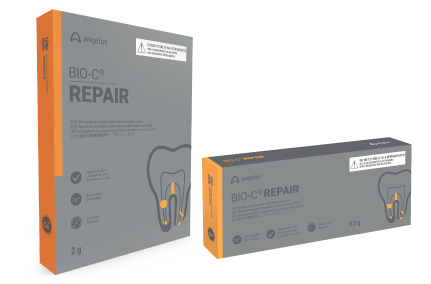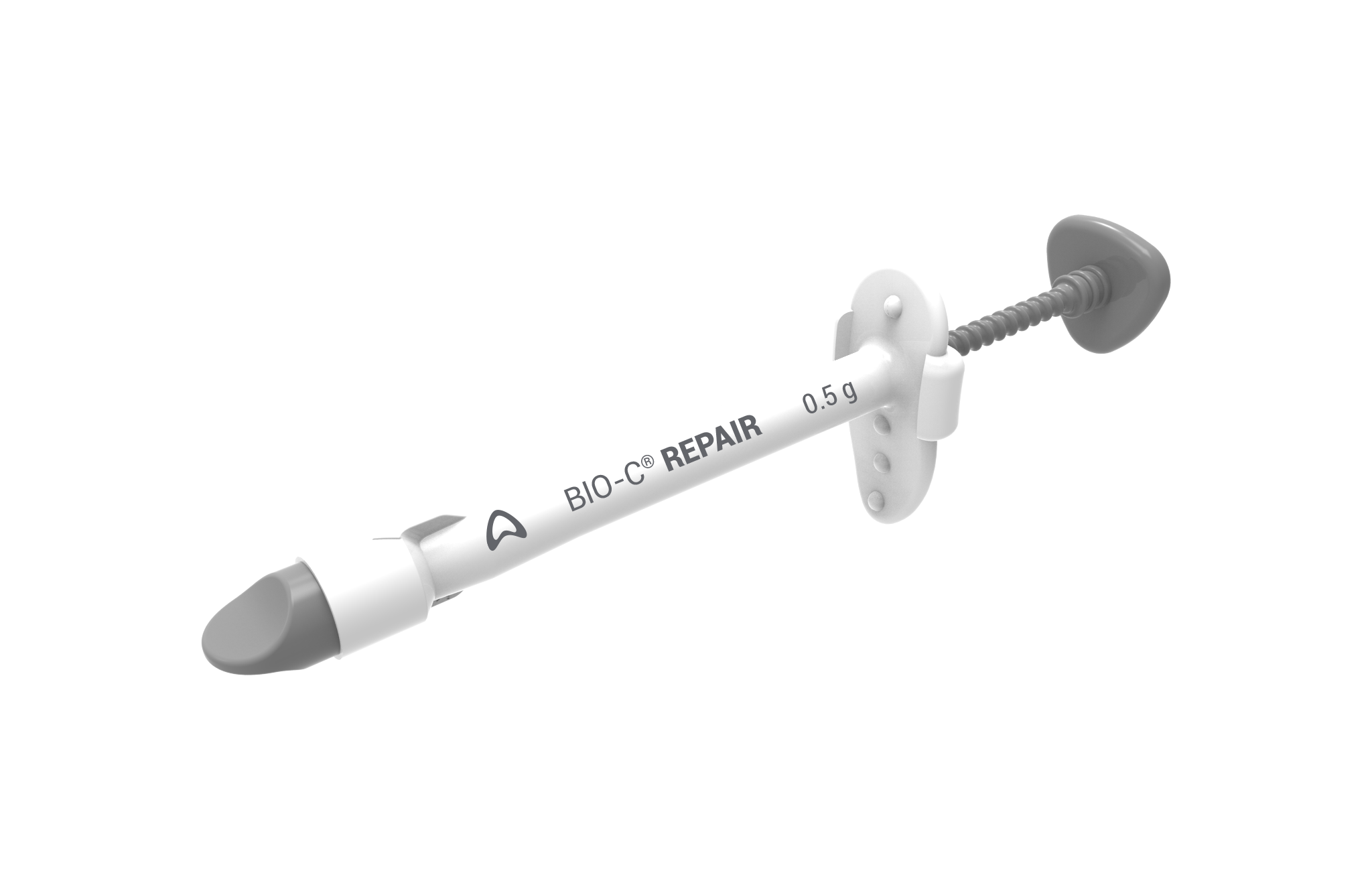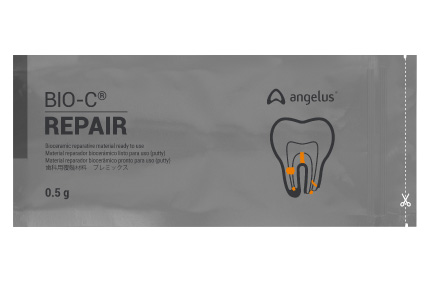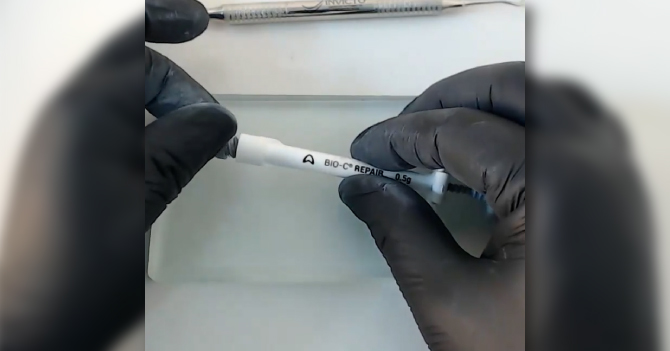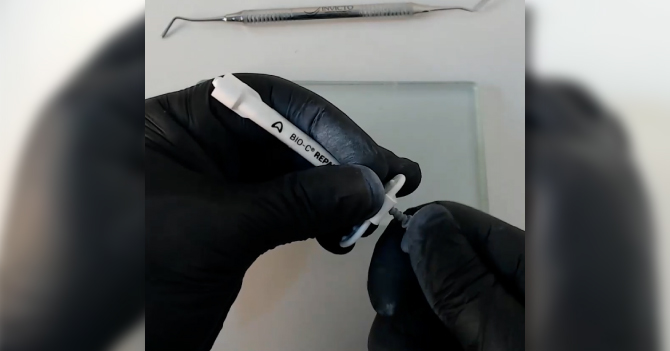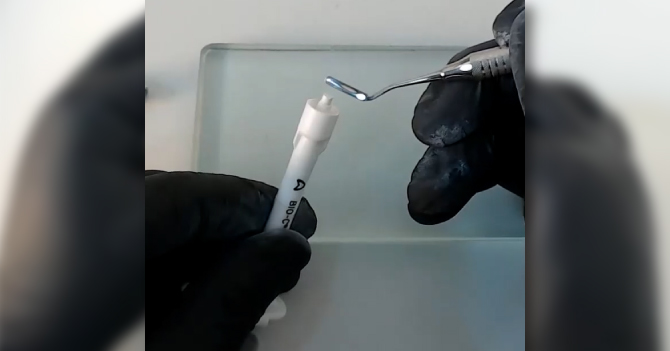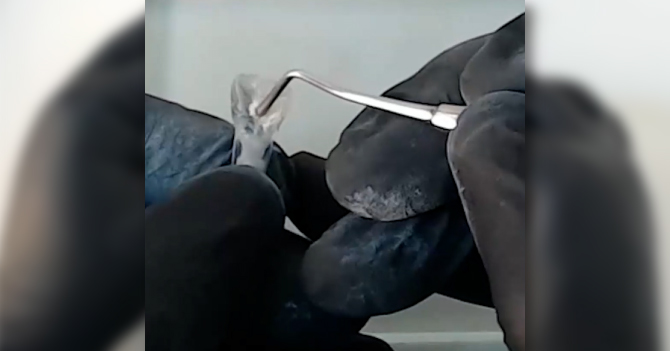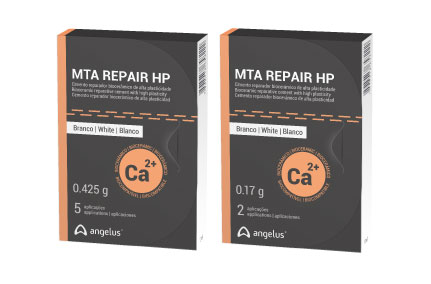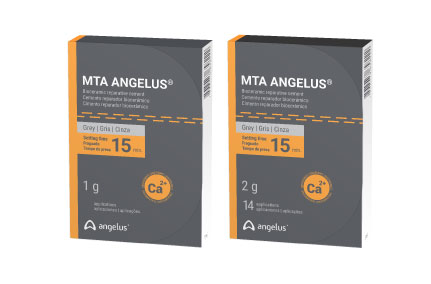
BIO-C ® REPAIR
Mais que biocompatível!Descrição
Material reparador biocerâmico pronto para uso (putty).
Indicação
Tratamento de perfuração de raiz ou furca via canal;
Tratamento de perfuração de raiz ou furca via cirúrgica;
Tratamento de reabsorção interna via canal;
Tratamento de reabsorção interna comunicante ou externa via cirúrgica;
Retrobturação em cirurgia parendodôntica;
Capeamento pulpar direto e indireto;
Apicificação;
Apicigênese;
Pulpotomia.
Características e Benefícios
Pronto para uso/putty
Fácil utilização e inserção na cavidade;
Alta liberação de íons Ca
Estimula a regeneração tecidual;
Alta alcalinidade (ph~12)
Ação bactericida;
Expansão de presa e adesão química a dentina
Impede infiltração bacteriana;
Radiopacificador Óxido de Zircônio
Alta radiopacidade e não provoca manchamento dentário;
Hidrofílico
Absorve a umidade do meio dando início ao processo de presa;
Ausência de Toxicidade
Não contém metais pesados;
Composição não resinosa
Permite o uso em ambientes úmidos sem perdas das propriedades;
Tamanho médio de partículas 2 mícrons
Maior reatividade, acelerando o processo de cura;
Apresentação
Ref. 3861 - Embalagem com 1 seringa com 0,5g
Ref. 3863 - Embalagem com 4 seringas com 0,5g
Materiais informativos
Perguntas Frequentes
O BIO-C REPAIR é um cimento reparador, e o BIO-C SEALER um cimento para obturação de canal radicular.
A presa dependerá da umidade do meio para que ocorra, mas de forma geral ela é ≤120 min.
O BIO-C® Repair por ser um cimento reparador, possui as mesmas indicações do MTA ANGELUS e MTA REPAIR HP, ou seja:
- Tratamento de perfuração de raiz ou furca via canal;
- Tratamento de perfuração de raiz ou furca via cirúrgica;
- Tratamento de reabsorção interna via canal;
- Tratamento de reabsorção interna comunicante ou externa via cirúrgica;
- Retrobturação em cirurgia parendodôntica;
- Capeamento pulpar direto e indireto;
- Apicificação;
- Apicigênese;
- Pulpotomia.
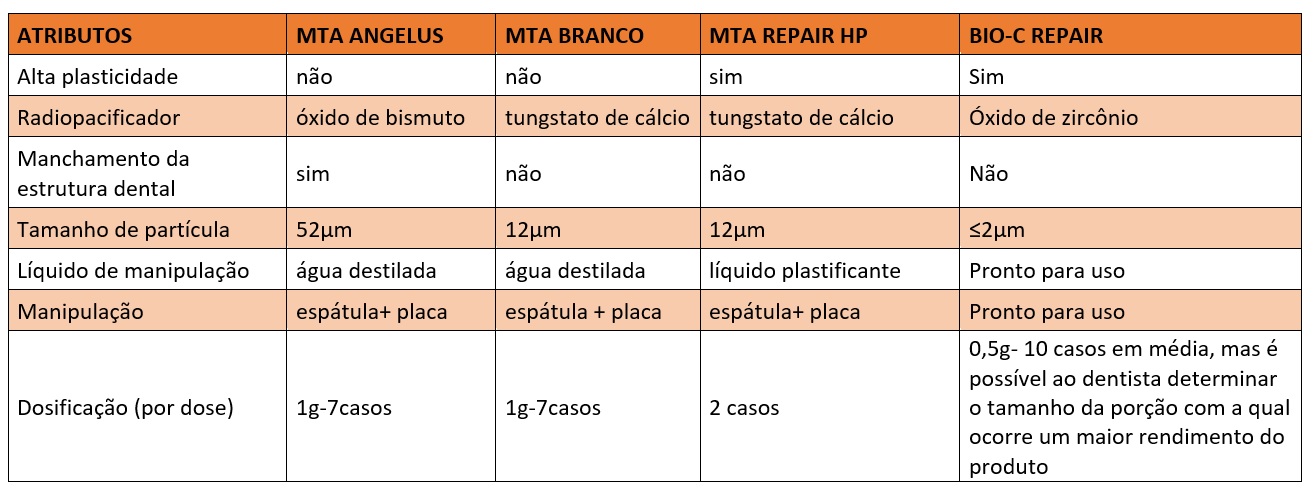
Depende do local de aplicação e preferências do profissional. Podem ser utilizados espátulas ou aplicadores de MTA (Aplicador de MTA Angelus).
A diferença entre o Bio-C Sealer e Repair está na quantidade de sílica nanoparticulada. No caso do Repair, a quantidade de sílica é cerca de 5 vezes maior, sendo a sílica responsável pela reometria, e consequentemente consistência de pasta para o Sealer e de putty para o Repair.
Como o Repair possui mais sílica ao final do processo de hidratação, em torno de 28 dias o material terá uma resistência maior do que o Sealer. Isto ocorre porque as partículas do Repair estão mais próximas umas das outras, permitindo uma maior coesão do cross-link das fases formadas durante o processo de hidratação: o silicato de cálcio hidratado (C-H-S) e as partículas de hidróxido de cálcio.
Onde comprar?
Consulte a disponibilidade dos nossos produtos em seu país.
